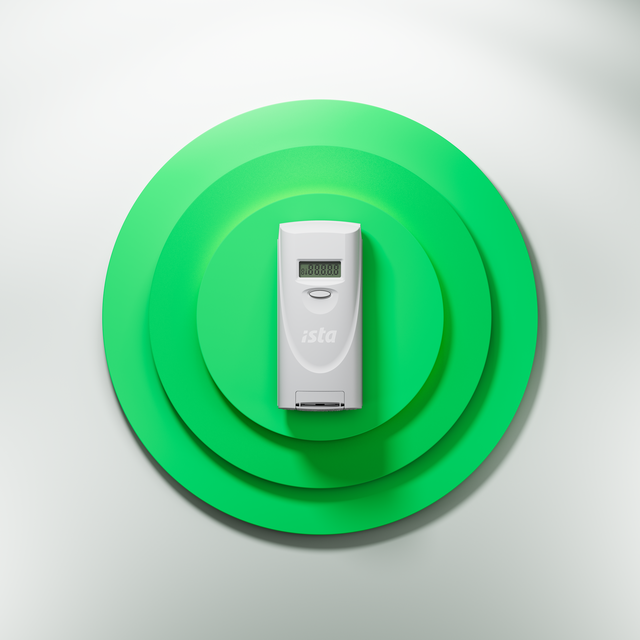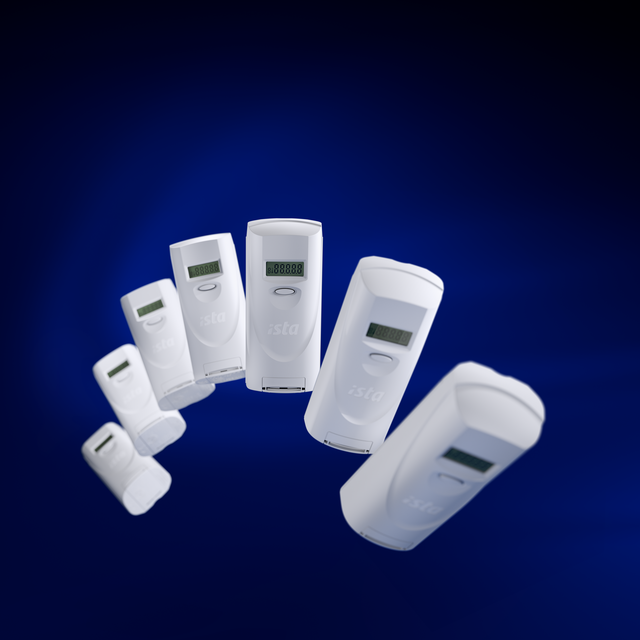
With ista's innovative wireless technology, heating costs can be managed much more effectively. Our heat cost allocators offer transparency, accuracy and ease of use in one powerful solution.
Being aware of your own energy consumption is the first step towards an efficient and climate-friendly use of resources – and the key to a fair cost distribution. Our devices precisely measure consumption for all types of radiators, ensuring greater fairness in heating cost allocation. By determining individual usage, each tenant only pays for the heat they have actually consumed, rather than a share of the total heating costs of the entire building, as would be the case with a flat-rate calculation based on square meters. ista heat cost allocators display consumption data clearly and user-friendly and can be conveniently read via wireless technology.

Our electronic heat cost allocator, doprimo 3 radio net-OMS, is already future-proofing properties: It combines all the proven features of the doprimo generations, including the standard integrated wireless interface, and is fully interoperable.
It offers three different service options, distinguished by an easy-to-read display and individual programming. You can choose between on-device reading, remote reading from outside the building, or full remote access.
This powerful tool also enables bidirectional transmission in network mode and unidirectional transmission in walk-by mode, allowing seamless transmission of data telegrams using different transmission methods.
The doprimo 3 radio net-OMS typically read is automatically on a monthly basis via a communication unit. The recorded end-of-month values serve as the basis for mid-year consumption information for tenants.
Battery-powered, self-contained unit for up to 10 years
Fully meets the requirements for interoperability
Encrypted and tamper-proof data transmission in accordance with GDPR
Activatable radio module without replacing the mounted device
High billing security thanks to interface-free electronic consumption recording
Automatic data transfer to the ista billing system
Detects dismantling and fraud
Easy move in/out of tenants thanks to large storage capacity for the last 14 end-of-month values


A heat cost allocator is a device used to measure individual heat consumption in buildings and is installed on radiators. The heat cost allocator consists of a top section made of heat-resistant plastic that houses all the electronics, including the LC display, a long-life 10+2-year lithium battery, and temperature sensors. The bottom section of the casing is made of highly thermally conductive die-cast material. A mechanical seal, along with tamper protection via the device’s electronics, safeguards against manipulation.
As a dual-sensor device, the heat cost allocator measures both the radiator surface temperature and the room air temperature. It starts recording consumption as soon as its activation temperature is reached and there is a corresponding temperature difference between the radiator sensor and the room air sensor.
In single-sensor mode, a fixed value for the room air temperature is simulated within the electronics. The device then calculates the difference between the measured radiator surface temperature and this preset value. In both operating modes, the temperature difference serves as the basis for determining heat consumption.
There are two types of devices: compact units, which are mounted directly on the radiator, and remote sensor units, where only the radiator sensor is attached to the radiator while the main housing is mounted separately on the wall and connected via a cable.